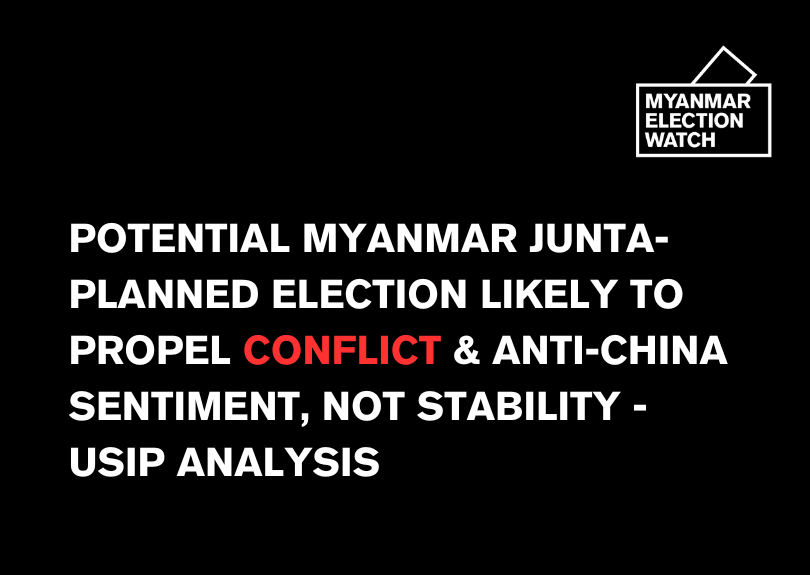A new analysis from the United States Institute of Peace (USIP) claims that the Myanmar junta-planned "election" likely to be held in 2025 may exacerbate the conflict. The author also posits that regime stability is unlikely with the junta's attempt to organize elections under current circumstances.

Link to the Original USIP Analysis, authored by Ye Myo Hein HERE.
The analysis by Ye Myo Hein, visiting senior expert (Burma) at the USIP highlights four key areas where the impact of Operation 1027, launched by Ethnic Armed Organizations (EAOs) on China's border in late 2023, transformed the trajectory of the conflict in Myanmar - nationwide escalation, evolving EAO dominance, resistance cooperation and Myanmar military setbacks.
An excerpt from the publication:
Four Things to Watch in 2025
2024 positioned the resistance movement to achieve a critical peak in 2025. Against this backdrop, four key developments warrant close observation.
- The conflict is likely to escalate in urban areas and central Myanmar, particularly in Mandalay, Yangon, Irrawaddy and Bago regions. While some areas may witness more conventional battles, guerrilla activities are expected to intensify across all regions. This shift in the theater of conflict will strain the military’s already overstretched resources but will also pose new challenges for resistance forces, particularly in maintaining supply chains and operational effectiveness. The densely populated nature of urban areas adds another dimension of complexity. Fighting in these regions, exacerbated by the military’s indiscriminate bombings, threatens to worsen conditions for urban populations and exacerbate the humanitarian crises. Escalation of conflict in the heartland of Myanmar, which is home to Myanmar’s military industry, will not only intensify the violence but will shape the trajectory of the broader conflict, influencing strategic decisions.
- The consolidation of EAO-controlled territories is expected to reshape Myanmar’s political landscape. In early 2025, EAOs are likely to solidify control over most territories in Kachin, Rakhine, Chin, Karenni and Karen states. This consolidation not only helps EAOs deepen their governance structures but also creates a significant shift in Myanmar’s balance of power, forcing neighboring countries and the international community to reevaluate their engagement strategies. Simultaneously, resistance groups are likely to expand their operations into urban areas, heightening conflict in key cities such as Mandalay and Yangon. This urban escalation will challenge the regime’s ability to maintain even its limited grip on power.
- The junta’s attempt to hold elections in 2025 that would entrench their power represents a desperate effort to build legitimacy with the international community. However, the context is vastly different from past elections, particularly those held in 2010. Recent research, including a detailed study by the BBC, indicate that the regime has full control of only 21% of the country, with the remaining territory either contested or under resistance control. Any attempt to organize elections under such circumstances is unlikely to stabilize the regime. Instead, it may exacerbate the conflict, deepen political fragmentation and further entrench EAO governance in areas under their control. Moreover, the junta’s inability to conduct elections in contested territories will highlight its diminishing authority, potentially leading to a fragmented post-election polity.
- China’s increasing involvement in Myanmar poses significant risks for Beijing’s long-term strategic interests. If China doubles down on its support for the junta to prevent its collapse, it will fuel growing anti-China sentiment among the Myanmar public and resistance forces. Protests against China’s backing of the regime have already intensified, both domestically and among diaspora communities. Infrastructure projects tied to Chinese interests are becoming increasingly vulnerable, and Beijing’s continued pressure on EAOs to negotiate with the military is unlikely to yield results. If China persists with this approach, it may find itself not only alienating the Myanmar public but also undermining its broader regional influence.
